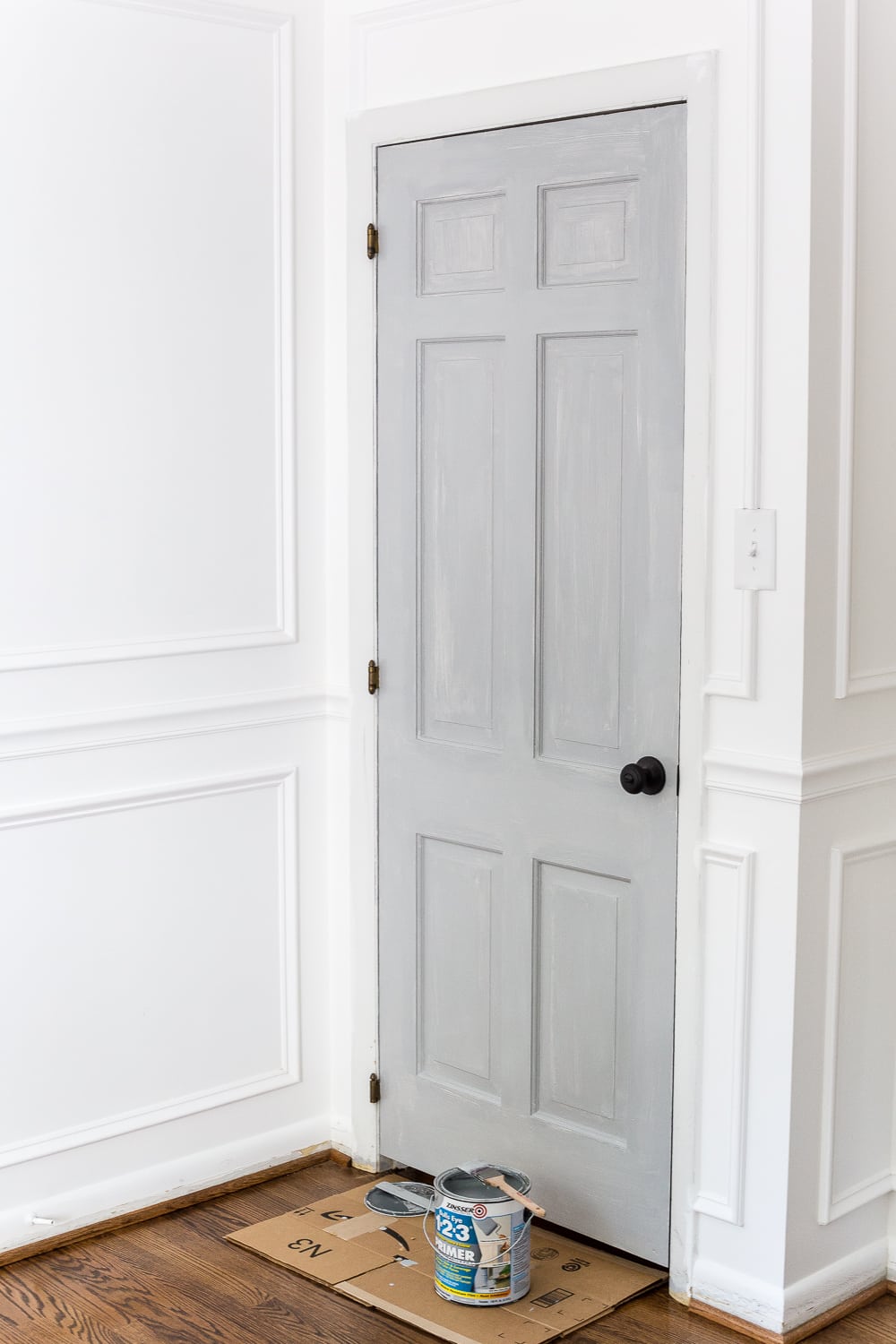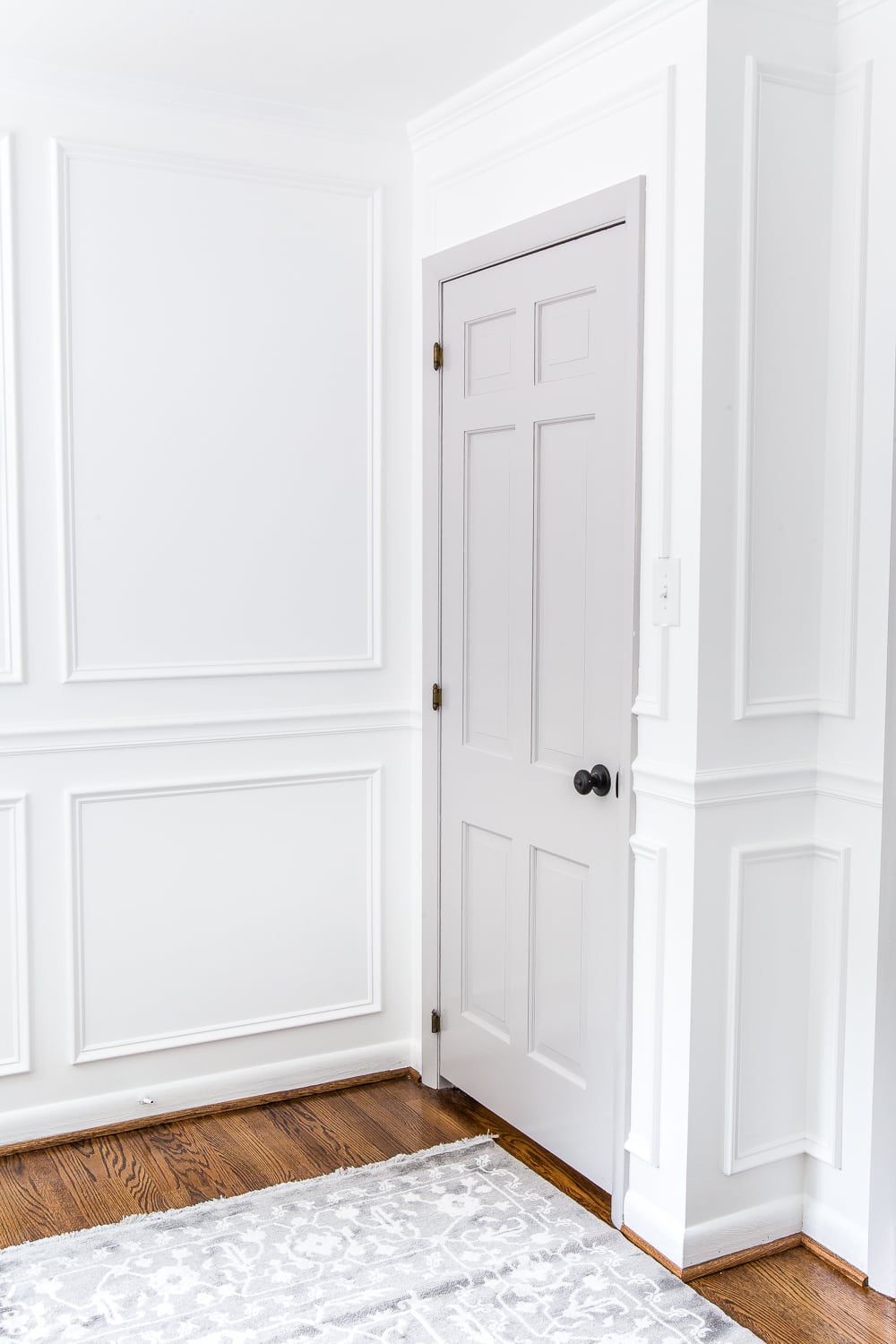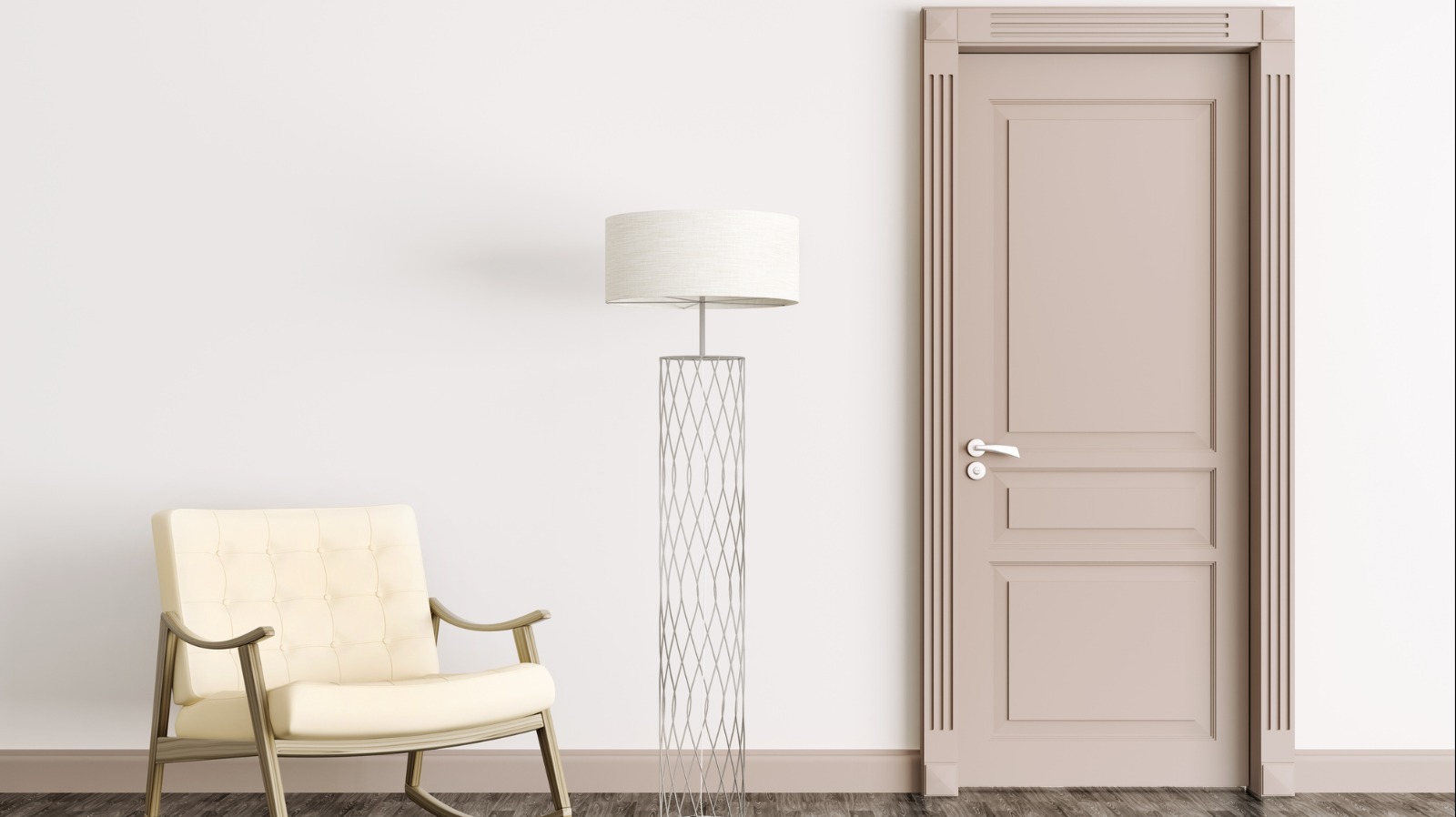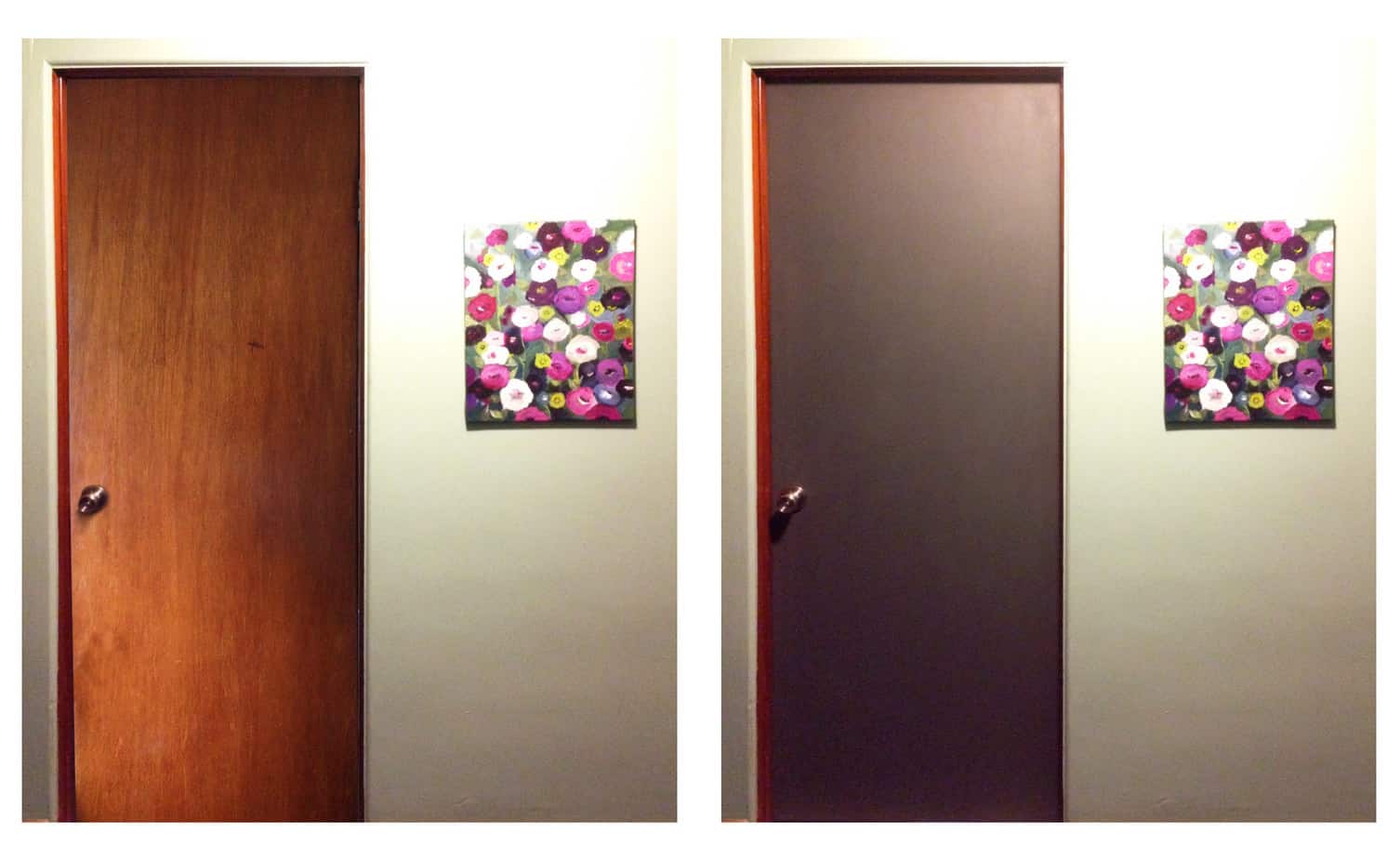What type of paint for interior doors? Painting interior doors can be a transformative and cost-effective way to update the look and feel of your home. However, selecting the right type of paint for interior doors is crucial to ensuring a smooth and durable finish. In this comprehensive guide, we will explore different types of paint commonly used for interior doors, discussing their unique characteristics, application methods, and benefits, helping you make an informed decision for your painting project.

Latex or Water-Based Paint:
Latex or water-based paint is the most common and widely used type of paint an ombre for interior doors. It offers several advantages, including:
- Versatility: Latex paint is available in a wide range of finishes, such as flat, eggshell, satin, semi-gloss, and high-gloss. This allows you to choose the level of sheen and the aesthetic you desire for your interior doors.
- Easy Clean-Up: Latex paint is easy to clean up with soap and water, making it a convenient choice for DIY projects.
- Quick Drying Time: Latex paint has a relatively short drying time, allowing you to complete your door-painting project more efficiently.
- Low Odor: Water-based paints emit fewer harmful fumes or odors, making them a safer option, especially for people with sensitivities.
Oil-Based Paint:
Oil-based paint, also known as alkyd paint, offers a different set of characteristics and benefits for painting interior doors:
- Durability: Oil-based paint forms a strong and durable bond with the door surface, providing excellent resistance to wear, scratches, and stains. This makes it a suitable choice for high-traffic areas or doors that require frequent cleaning.
- Smooth Finish: Oil-based paint tends to level out better, resulting in a smoother finish. This is especially beneficial for doors with imperfections, as the paint can help conceal minor flaws.
- Harder Finish: Oil-based paint forms a harder and more robust film compared to latex paint, providing added protection against dings and impacts.
- Longer Drying Time: One downside of oil-based paint is its longer drying time, which can extend the overall duration of your project. Adequate ventilation is necessary during application to allow for proper drying and to dissipate any strong odors.
Hybrid or Alkyd-Enamel Paint:
Hybrid or alkyd-enamel paints combine the advantages of both latex and oil-based paints, aiming to deliver the best of both worlds:
- Quality Finish: Hybrid paints provide a smooth and durable finish similar to that of oil-based paint.
- Easier Application: Unlike oil-based paints, hybrid paints have a waterborne component that makes them easier to apply, with less odor and a shorter drying time.
- Improved Coverage: Hybrid paints often offer excellent coverage, requiring fewer coats for a more uniform finish.

When selecting a paint for your interior doors, consider the following factors:
- Door Material: Different materials, such as wood, MDF, or metal, may require specific types or primers of paint. Consult the manufacturer’s recommendations for the best results.
- Door Location: Consider the location of the door within your home. High-traffic areas or doors exposed to moisture, such as bathrooms or kitchens, may benefit from the increased durability of oil-based or hybrid paints.
- Personal Preference: Your personal aesthetic preference and desired sheen level can also influence your paint choice.
- Environmental Impact: Consider opting for low- or zero-VOC options if you prefer environmentally friendly tone wall paint with minimal harmful emissions.
Things to note when painting interior doors
Painting interior doors can be a rewarding and cost-effective way to revitalize the look and feel of your home. However, proper preparation and execution are key to achieving a smooth and long-lasting finish.
Surface Preparation:
Clean the Doors: Before painting, it is crucial to clean the doors thoroughly. Remove any dust, grime, or grease using a mild detergent solution, warm water, and a clean cloth or sponge. Rinse the doors with plain water and allow them to dry completely.

Sand the Surface: Use fine-grit sandpaper or a sanding block to lightly sand the door’s surface. This helps remove any existing paint flakes, smooth out imperfections, and provide a better surface for the new paint to adhere to. Wipe away any sanding residue with a clean cloth.
Repair Damaged Areas: Inspect the doors for any damage, such as holes, cracks, or dents. Use a suitable wood filler or putty to repair these areas. Allow the filler to dry completely and then sand it until it is smooth and level with the door’s surface.
Remove Hardware: If possible, remove any door hardware, such as knobs, hinges, or plates, before painting. This ensures a neater and more professional finish. If removal is not an option, protect the hardware using painter’s tape or plastic wrap.
Paint Selection:
Choose the Right Paint: Consider the type of paint recommended for the door material, as well as your desired finish and durability. Latex or water-based paints are commonly used for interior doors due to their ease of application and quick drying time. Oil-based paints offer enhanced durability but have a longer drying time. Select a high-quality paint that is specifically designed for trim or doors for optimal coverage and durability.
Consider Primer: Depending on the condition of the doors and the type of paint you are using, applying a primer may be necessary. A primer helps improve paint adhesion and enhances the uniformity of the final finish. Follow the manufacturer’s instructions for the proper primer to use with the chosen paint.

Application Techniques:
Use Proper Brush or Roller: Select a high-quality brush or roller specifically designed for trim work or doors. A brush with synthetic bristles, or a foam or microfiber roller, is suitable for applying paint smoothly and evenly. Consider the size of the brush or roller based on the door’s size and detail.
Apply Thin Coats: It is better to apply multiple thin coats of paint rather than one thick coat. This helps prevent drips, streaks, and uneven drying. Allow each coat to dry completely as per the paint manufacturer’s guidelines before applying the next coat.
Brushing Technique: When using a brush, apply the paint in the direction of the wood grain for a smoother finish. Start by painting the recessed or detailed areas first, such as panels or moldings, before moving on to the flat surfaces. Feather out brush strokes to minimize visible lines.
Conclusion:
Choosing the right paint for interior doors involves considering factors such as durability, desired finish, drying time, and personal preference. Latex or easy wall paint is versatile, easy to clean, and dries quickly. Oil-based paint provides exceptional durability and a smoother finish but may have a longer drying time. Hybrid or alkyd-enamel paints offer a balance between the two, with improved coverage and easier application. Assess your specific needs and preferences, consult manufacturer guidelines, and take the door location into account to select the most suitable paint type for your interior doors.
